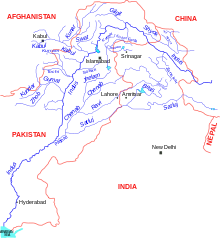
Astor River (Urdu: دریائے استور), in Pakistan's Gilgit-Baltistan region, is a tributary of the Indus River and one of the rivers draining the Deosai Plateau, running through Astore Valley. The river originates on the western slopes of Burzil Pass.[1]
Astor river joins Gilgit River at coordinates 34°00′N 74°41′E / 34.000°N 74.683°E.[2]

Footnotes[edit]
- ^ Sultana, K.; Muqarrab Shah; T.M.Upson (2007). "Altitudinal Distribution of Grasses, Sedges and Rushes of Deosai Plateau: Pakistan". The Electronic Journal of Environmental, Agricultural and Food Chemistry. 6 (11): 2518. ISSN 1579-4377. Archived from the original on 2009-12-18. Retrieved 2009-08-11.
- ^ GeoNames. "Astor River". Retrieved 2009-08-11.
External links[edit]
34°00′N 74°41′E / 34.000°N 74.683°E
Well, that’s interesting to know that Psilotum nudum are known as whisk ferns. Psilotum nudum is the commoner species of the two. While the P. flaccidum is a rare species and is found in the tropical islands. Both the species are usually epiphytic in habit and grow upon tree ferns. These species may also be terrestrial and grow in humus or in the crevices of the rocks.
View the detailed Guide of Psilotum nudum: Detailed Study Of Psilotum Nudum (Whisk Fern), Classification, Anatomy, Reproduction